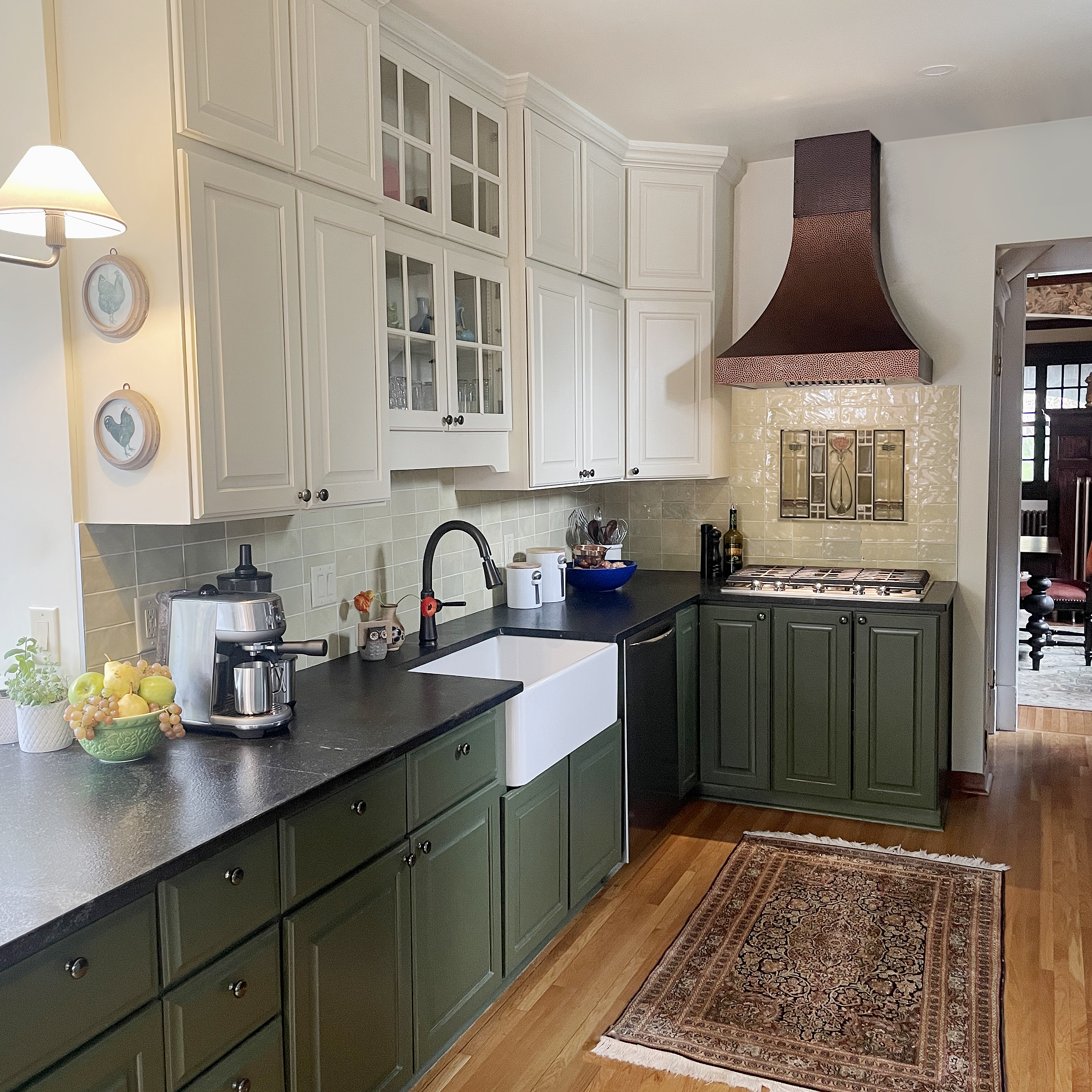
When designing a home, striking a balance between comfort and classiness is no mean feat. We all want a space with cozy charm to nourish the soul, and yet, we also want an air of elevated elegance for a home that looks sophisticated. Well, the Mission-style aesthetic might be the answer, and it has designers' seal of approval.
Characterized by clean lines with an emphasis on craftsmanship, this design movement brings furnishings back to basics. It can be traced back to the late 19th Century when mission craftsmen chose simplicity, functionality, and raw materials over the ornate, over-embellished features that marked the Victorian style. The result? A classic and timeless design movement that offers understated charm while prioritizing comfort.
And despite its historic roots, the Mission style holds just as much relevance today as it did all those years ago. The once-dated style is enjoying a moment in the spotlight once again. If you keep your eye on all the latest interior design trends, you'll want to know about this one.
What are mission style interiors?

The Mission style originated in the US as an offshoot of the Arts and Crafts decor movement but, as Carter Averbeck of Omforme Design explains, it really came into its own around 1900. 'The style was heavily influenced by the simple, functional furniture found in California Spanish missions, which is where the "mission" name comes from,' he says. 'The lines are simple and clean, showcasing natural wood usually in a dark stain and exposed joinery.'
If you gravitate towards classic interiors but don't like overly 'traditional' schemes, then the Mission style is for you. 'It emphasizes simplicity, craftsmanship, and natural materials, and focuses on function over style,' explains interior designer Jessika Gatewood of Gatewood Designs. That's not to say these spaces don't hold a beautiful aesthetic quality, however. Dominated by earthy colors and furniture with defined silhouettes, these spaces are still elegant without being showy.
It's an aesthetic that bears similarity to other movements of the time, but it's still distinct in its own right. 'Mission Style often gets confused with other styles such as Arts & Crafts, Craftsman, Prairie or Shaker Style,' notes Carter. 'The latter four styles are simply modifications of Mission Style as new trends emerged. Some styles such as Shaker were visually lighter weight versions of Mission, whereas Craftsman and Prairie had distinct style directions that kept the clean lines of Mission albeit with a few bits of woodwork flair.'
Why is the mission style aesthetic trending?

Homes with classic comfort and a pinch of nostalgia are on everyone's wishlist right now, and Mission-style interiors offer all of the above. In fact, the movement's focus on simple forms and clean lines meant it was ahead of its time.
'With minimalism and sustainability on the rise, Mission style is really resonating with homeowners who want something authentic and lasting,' says Jessika. 'It’s all about craftsmanship and those beautiful handmade details that bring warmth and tradition — such a refreshing change from our tech-driven world.'

Right now, we all want our interiors to have raw, authentic qualities; less cookie-cutter design, and more individuality and charm. 'There is an honest simplicity to Mission style with an emphasis on natural materials, warmth, and comfort,' adds interior designer, Taylor Jacobson. 'This fits in with what I perceive to be a trend towards the handmade and a celebration of craft – hand-carved wood, ceramics, stained glass, ironwork. I think it may be a reaction to the gray and white cool neutrality fad that happened about a decade ago.'
How to embrace mission style interiors in your home

If the simplicity of Mission-style interiors appeals to you, there are plenty of ways to embrace this look in your home. According to Jessika, wood should make up the foundation. 'Incorporate solid oak or walnut furniture with visible grain patterns,' she says, noting that built-in bookshelf ideas or cozy nooks are a hallmark of Mission design. 'Detailed trim work, custom molding, or handcrafted woodwork will highlight the artisanal quality of Mission style,' she adds.
You should also think about including other organic finishes, forms, and textiles throughout your space. 'Think stained (versus painted) wood, simple, practical shapes in furniture design, warm natural fibers like linen or leather upholstery, and earthy tones like brown, olive green, deep blue, rust,' says Taylor. 'When accessorizing, look for handmade pieces like pottery, stained glass, and original artwork.'
You can balance the look with a modern edge, too, just as Taylor has done in the space above with a statement disco-ball-inspired shade and two luxe velvet accent chairs. There's no mistaking this cozy living room for a contemporary space, and yet it still nods to the simple craftsmanship of Mission style with exposed woodwork, built-in shelving nooks, and wooden shutters.
There are so many reasons to love this no-frill style today, perhaps even more so than ever. 'To enjoy the minimal details Mission-style brings to a home is to embrace an unfussy nature, that can be a respite from the "always-tuned-in" 21st century world,' says Carter. And with that in mind, we're pretty certain you'll see much more of this understated style cropping up in the years ahead.
This solid wood ottoman feels classic and timeless. The exposed joinery is so in keeping with the Mission aesthetic.







